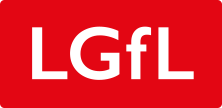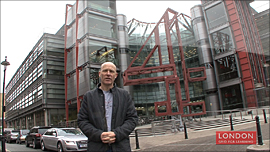KS3 Curriculum Links
Art and Design: Explore and Create 2.1e
Explore and develop ideas using sketchbooks, journals and other appropriate strategies.
Design and Technology: Cultural understanding 1.2a
Understand how products evolve according to users’ and designers’ needs, beliefs, ethics and values and how they are influenced.
Mathematics: Geometry and measures 3.2h
Perimeters, areas, surface areas and volumes.
Science: Energy, electricity and forces 3.1b
Forces are interactions between objects and can affect their shape and motion.
KS4 Curriculum Links
Mathematics: Communicating and reflecting 2.4e
Give examples of similar contexts they have previously encountered and identifying how these contexts differed from or were similar to the current situation and how and why the same, or different strategies were used.
Mathematics: Geometry and Measures 3.2a
Properties and mensuration of 2D and 3D shapes.
Key words
Structural Frame: a steel or concrete frame that supports the building.
Load bearing: an element of the structure that supports the weight above.
Activity
Preparation: Choose a space where structure is clearly expressed.
Materials: simple diagrams of a person and their skeleton, and a building and its frame structure.
Steps:
- Explain to the group that the structure of a building is like a person’s skeleton and that without it the building would collapse. Show them the images.
- In pairs students should look for clues in the space to find out how the building stands up. Suggest they look up:
- Can they see any horizontal elements across the ceiling?
- Are there any columns in the middle of the room?
- If they tap the wall does it sound hollow or solid?
- Working in pairs, ask the students to go outside to look for evidence as to how the building stands up.
- If permission is given from the building owner, students can highlight the structure with post it note stickers.
- Discuss as a group the findings and decide whether the building uses a structural frame or system of load bearing walls, or a combination of both.
- As a group, discuss the advantages and disadvantages of different
- types of structure in buildings. Some clues for students to think about: space saving, insulation, adaptability, speed of construction, how ‘open’ or ‘closed’ the space feels.
Delve deeper: a physical understanding of space
- Students may find it helpful to recreate the structure of the building with their bodies.
- Ask for 2 volunteers to stand up straight with their legs together. Ask them to hold a large piece of card over their heads and imagine they are columns holding up a roof.
- Ask for a volunteer to push the ‘columns’.
- Everyone observes what happens and the group should describe it - the columns are unsteady, resulting in a wobbly roof.
- Ask the volunteers to stand with their legs apart.
- The volunteer should push against the ‘columns’ again.
- Everyone observes what happens - the ‘structure’ is more sturdy this time.
- Ask for suggestions and explanations as to why the situation has changed, and for possible further improvements to the structure.
Activity Continued
- More students can join the configuration to act out ‘improvements’.




